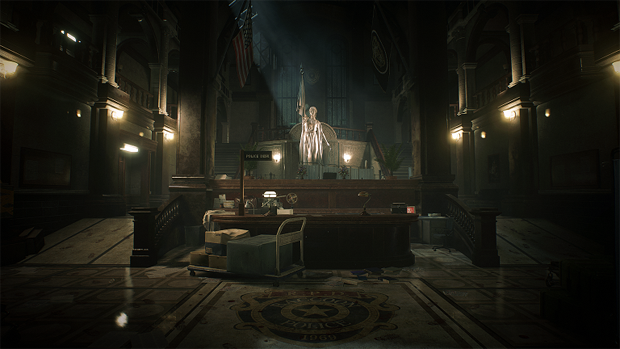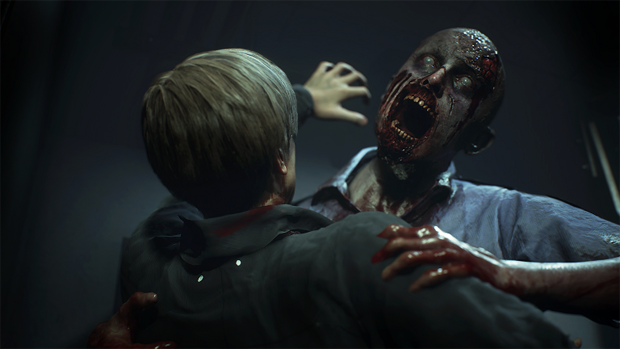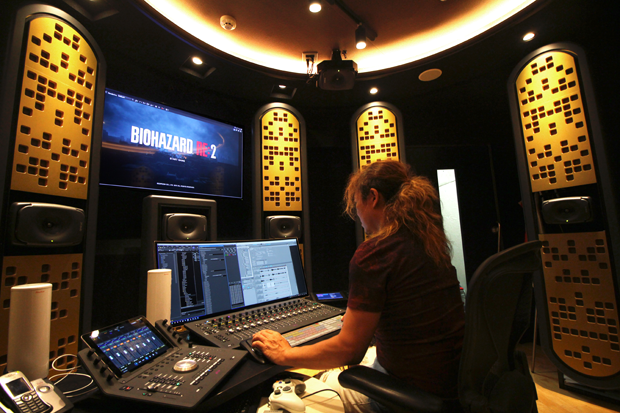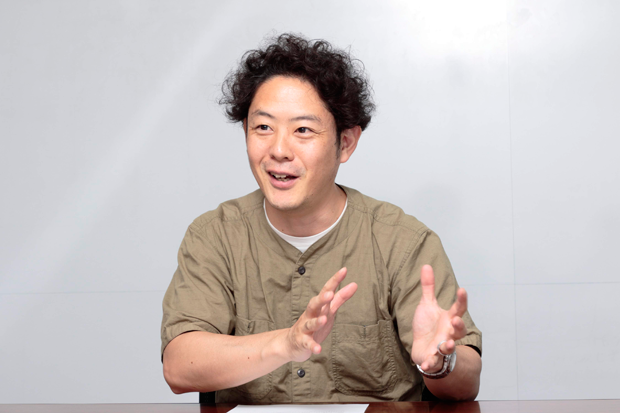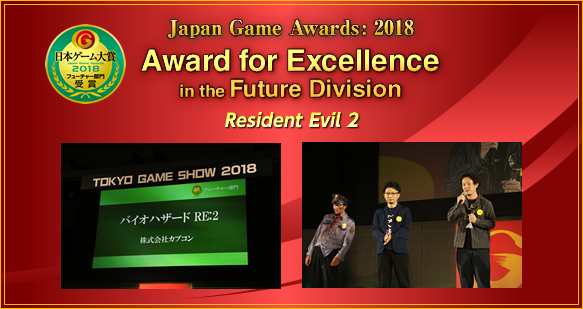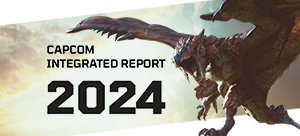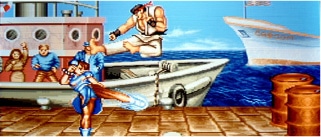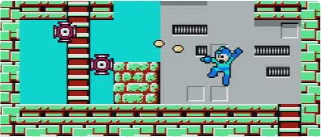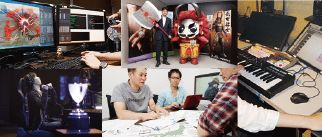- Could you start by telling me about your career?
- I started at Capcom as a fresh university graduate in 2002. I began on the business and administration side of the company, and then I was actually transferred to Capcom USA for a time. When I returned to Japan, they wanted to place me in a position in which I could capitalize on the experience I’d accumulated overseas, so I ended up working as a producer on Resident Evil 7 biohazard (hereafter, Resident Evil 7).
- Moving from business to development… That’s quite rare. What sort of work did you do while abroad?
- Marketing, merchandise licensing, and business strategy. I wanted to help expand Capcom’s games throughout the world since I first began, so I jumped at the chance to work overseas without any hesitation.
- Sorry for the tangent, but since we’re talking about stuff overseas: Resident Evil 2 was officially announced at E3 (Electronic Entertainment Expo), isn’t that right?
- Yes, we had to keep quiet about Resident Evil 2 since we announced the project in 2015 until its official reveal at E3 2018. It was quite a relief to finally unveil it to everyone.
- Around when did development begin?
- It actually started right in the middle of the development of Resident Evil 7. That game provided full-VR support on PlayStation 4, and we wanted to make it an overwhelming and immersive experience, diving into the depths of terror. Resident Evil 2, on the other hand, was designed to go beyond pure terror: we wanted it to have real drama, befitting of the label “horror entertainment.” With these core principles, along with a deep respect for the original Resident Evil 2, we sought to reimagine the game from the ground up. I believe that the end result will prove entertaining for both those who have played the original version, as well as those who haven’t.
- Yeah, there’s definitely more than one way to enjoy horror. Moving on, can you tell me what led up to the development of Resident Evil 2?
- There were a number of things we hoped to accomplish with the project, but first and foremost was responding to the passionate desires of series fans. Resident Evil 2 (1998) has proven to be extremely popular, with its engaging characters, horror elements, and high entertainment value. The numerous extra modes and bonus weapons were also a big hit. These elements had resonated with players throughout the years and left them clamoring for a remake. Especially beloved back then was the Zapping System, through which the actions taken by the player during one character’s campaign could affect parts of the other character’s campaign. In the 2019 version, instead of this, Leon and Claire will have their own campaigns that present a comprehensive story.
- It’s true that Resident Evil 2 (1998) is the 6th-best-selling title in Capcom’s history, selling 4.96 million copies (as of September 2018.) The numbers alone speak to its popularity.
- It has also been 20 years since the original version was released, and so those who played it back then are now old enough to be parents. So, we also wanted this game to serve as a sort of bridge to introduce newer audiences to the world of Resident Evil.
- Right, you want to expand the series’ fan base. How was the reaction when the game was announced?
- There were massive lines of people at the demo kiosks set up at Capcom’s booth at E3, and many of the people who played it told us “I’ve been waiting for a Resident Evil like this!” The responses exceeded our expectations in their enthusiasm, which really bolstered the spirits of the development team. You could say that the announcement marked a new start for the team, leaving us determined to exceed the hopes of our players in return.
- How are you handling promotion?
- With San Diego Comic-Con in July, Germany’s gamescom in August, and the Tokyo Game Show in September, we’ve had events basically every month all around the world. We’ve tried to make the game playable at each of them to offer players the chance to experience and appreciate the quality of the title for themselves. We’ll be showing the game again at New York Comic Con and the Brasil Game Show in October.
- Brasil Game Show? I’ve never heard of that one.
- Yeah, it’s probably not very well known among Japanese people. I first participated in the Brasil Game Show while working at Capcom USA, and I was struck by the pure, unbridled passion of the fans there. The scale of the South American market is smaller than in North America, but this event lets you see the potential for growth there. Historically, South America has not been as big a focus, so I hope that we can expand our user base and our sales there in the future.
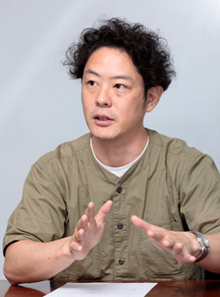
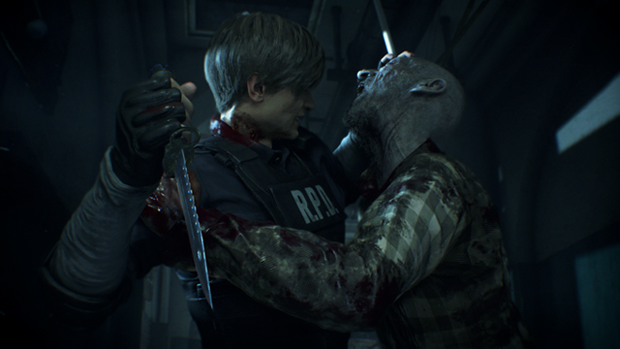
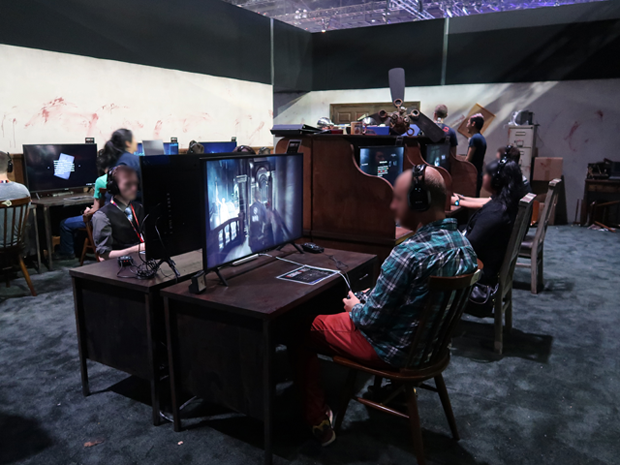
- So Resident Evil 2 is targeting the global market, including Brazil. With the original having such a strong legacy, it must have been a bit difficult working on a complete reimagining.
- Yeah, it was. And not only because we’re thinking of the fans out there—the development team members are all fans of Resident Evil 2 (1998) as well, so we all had different elements we obsessed over saying “We have to keep this in!” We spent a lot of time discussing what to keep and what to change. Throughout the reimagining process, we made sure not to lose sight of our core vision: to create something both nostalgic and new.
- So could you tell me about some of the things you changed and some you kept?
- Even as we say that it’s completely reimagined, of course we were conscious of maintaining the world and “play-feel” of the original. However, if you already know about all of the scary parts, it loses some of its impact, so when it comes to the horror aspects we’re changing some pieces from how they were in the original, while remaining faithful to the original motifs. For example, one of Resident Evil 2‘s greatest charms is the feeling of exploration, so the layout of the police station has been changed from the original to maintain that experience.
- So you’ll be able to turn the tables and surprise players, even if they’re familiar with the original.
- Right. The game is loaded with things like that throughout.
- Are there any changes to the story?
- The overall plot remains the same, but we’ve rearranged some of the events that occur throughout the game, or tweaked things to make the game a bit easier to understand as a whole. We’ve also tried to deepen the narrative experience and the relationships between not only Leon and Claire, but all of the game’s characters, in order to increase the dramatic tension.
- Are there any things that you were unable to accomplish 20 years ago, but were able to include now thanks to new technologies?
- Well, when it comes to graphics, the RE Engine has allowed us to make a game with a much greater level of three-dimensionality and detail. For example, in the original game, the Lickers were introduced in an FMV cutscene in which they appeared on the ceiling, but when you fought them they only ever crawled along the floor. In this version you’ll face Lickers with 360-degree mobility, creating much more expansive battles overflowing with tension and the sense of really being in the thick of it.
- Sounds like a tough fight!
- There’s also the scariness of the zombies—the ability to create that sense of presence, even in things like the characters’ movements when being bitten by a zombie. This time we decided to go with a third-person, over-the-shoulder viewpoint, in order to show off the actions and performances of both the player characters and the zombies they encounter. The gnawing and biting in particular is one of the core characteristics of zombies, and so we put a great deal of effort into those animations.
- I’m actually a little scared just thinking about these detailed zombies appearing on a large TV screen.
- At the same time, as we move closer to photorealism we also have to comply with ratings regulations on what can be shown. However, we want to push the limits and do as much as possible within the boundaries we were given. In addition, we’ve been hard at work on evoking a real sense of darkness and wetness in the world, so that the graphics really evoke a sense of “Resident Evil-ness.”
- Is there anything non-graphical that you’ve been focusing on in order to capture the Resident Evil feeling?
- Yes, the sound. We used Capcom’s “Dynamic Mixing Stage,” a 3D sound booth built in 2017, along with Dolby Atmos technology giving Resident Evil 2 full 7.1.4 surround sound support. Furthermore, by implementing binaural techniques we are able to modify sounds in real time, which lets you hear the groans of zombies from all around, in relation to your character’s position. You’ll be able to experience the terror through your sense of hearing, as well as sight.
- Games sure have come a long way since 1998.
- It’s true. The development team has been working hard to create a gaming experience so rich that we hope players will stop and think, “Wow, you can do this in games nowadays?”
- Well, I’m sure everyone has high hopes for Resident Evil 2‘s launch. Do you have any final words for those fans looking forward to it?
- There’s only a little bit longer to go before release, and the development team is rallying for the final push. We’re hard at work making sure players will have the best survival horror experience possible while maintaining the feel and nostalgic elements of the original. We’re looking forward to everyone enjoying the immersive and terrifying experience these zombies provide—an experience made with the newest technologies available. We’re confident that this game will exceed everyone’s expectations; both those who have played the original and those who haven’t. We hope you’ll all enjoy it!
